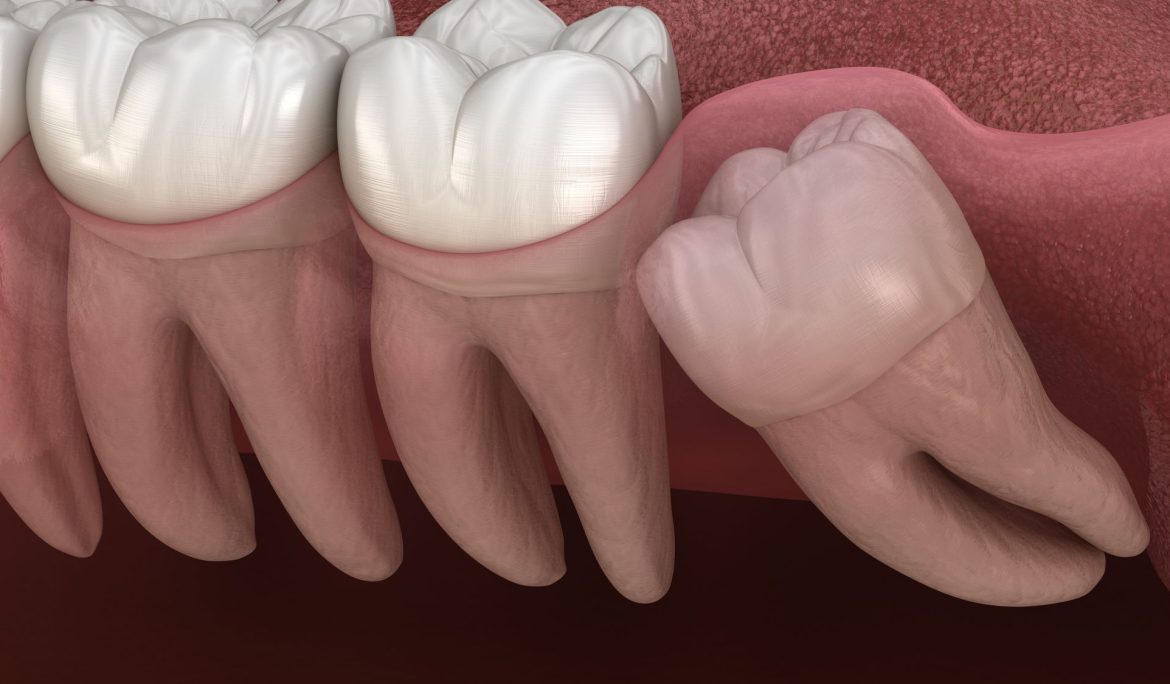What are Impacted Wisdom Teeth? Causes, Symptoms & Removal
A human adult usually has 32 teeth. The teeth at the very back of the mouth are known as wisdom teeth. They are also known as the third molars and they are usually the last teeth to erupt. They do so between the age of 17 and 24. So if you are 20 years old and still have 28 teeth there is hope that you will get your wisdom teeth.
However, there are conditions where the wisdom teeth do not develop into the mouth because they are stuck in the gums. This condition is known as impaction and the teeth are now referred to as impacted wisdom teeth.
In this blog we are going to dive into the causes, symptoms and how they are removed.
What causes impaction of wisdom teeth?
The commonest cause of impaction is lack of space in the mouth for the tooth to grow. This may be as a result of having a small jaw compared to the size of the teeth.
Other causes may be that the tooth is growing in the wrong angle thus stuck and cannot reach the mouth. The diagram below shows.
Mesial impaction-the tooth is angled towards the front of the mouth
Vertical impaction-the tooth is vertical but is unable to break the gumline
Distal impaction-the tooth is angled towards the back of the mouth
Horizontal impaction-the tooth is oriented horizontally
What are the symptoms of impaction?
Pain or swelling around the jaw around where the tooth is supposed to erupt
Swollen and bleeding gums around where the tooth is supposed to erupt
Bad breath despite having good oral hygiene
Unpleasant taste in your mouth
Problems opening your mouth
How do we diagnose impacted wisdom teeth?
Once you present with the symptoms of an impacted wisdom tooth, it is important we examine further its orientation as described above. We determine this with the aid of x-rays. This assists in knowing how we will remove it and also the risks posed by the procedure based on the position of the tooth in relation to other critical structures e.g., nerves.
We will discuss all these with you before embarking on the procedure.
How do we remove them?
The process of removing an impacted wisdom tooth is known as disimpaction and is a minor surgical procedure performed on the dental chair by the dentist.
The process begins by numbing the region. This is for your comfort and ensures you do not feel any pain throughout the procedure. Then we cut into your gum, reduce the level of the bone so as to adequately visualize the tooth. Then take out the tooth, disinfect the area and close the incision with stitches. We will then put you on medication like painkillers to ensure your comfort after the procedure,a mouth gargle to rinse the mouth with and antibiotics to clear any infection present.
The procedure is usually between 30 to 60 minutes. It varies with the depth of the tooth inside the bone which is proportional to its difficulty for example, the deeper it is, the longer the procedure takes.
Do all wisdom teeth need extraction?
If an impacted wisdom tooth does not present with any symptom or does not increase the risk of infection, gum disease, tooth decay or any other diseases, it is not necessary to extract them.
Wisdom teeth are removed if they are experiencing pain, swelling, or soreness. They can also be damaged if they are partially erupted or decayed.















